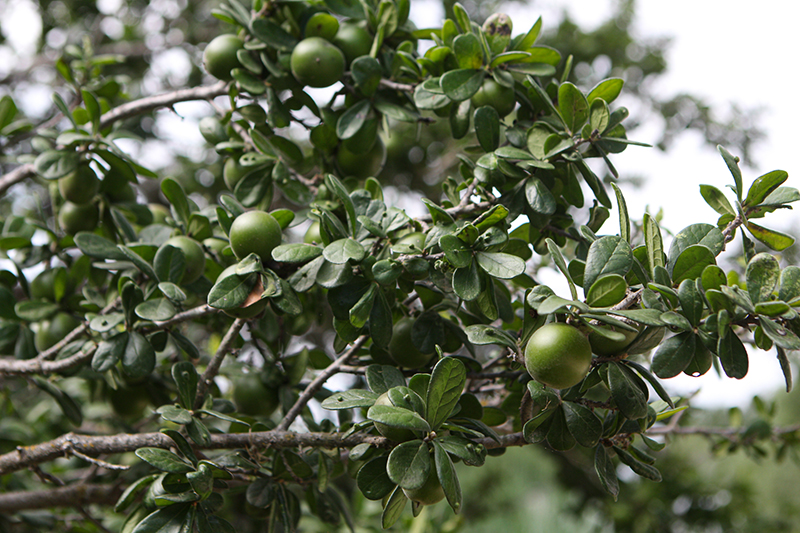Plant Finder
Height: 20 feet
Spread: 20 feet
Sunlight:
![]()
![]()
Hardiness Zone: 8a
Other Names: Mexican Persimmon, Black Persimmon
Description:
A beautiful large shrub or small tree that is usually multi-stemmed; production of the sweet fruit requires both male and female trees; typically round-topped with an open, erect habit; evergreen in its southern range
Edible Qualities
Texas Persimmon is a small tree that is typically grown for its edible qualities, although it does have ornamental merits as well. It produces black round fruit (technically 'pomes') which are usually ready for picking from mid to late summer. The fruits have a sweet taste and a fleshy texture.
The fruit are most often used in the following ways:
- Fresh Eating
- Baking
- Preserves
Features & Attributes
Texas Persimmon has dark green evergreen foliage on a tree with a round habit of growth. The glossy oval leaves remain dark green throughout the winter. The fruits are showy black pomes carried in abundance from early to late summer. The fruit can be messy if allowed to drop on the lawn or walkways, and may require occasional clean-up. The peeling gray bark adds an interesting dimension to the landscape.
This is an open multi-stemmed evergreen tree with a more or less rounded form. Its average texture blends into the landscape, but can be balanced by one or two finer or coarser trees or shrubs for an effective composition. This is a high maintenance plant that will require regular care and upkeep, and is best pruned in late winter once the threat of extreme cold has passed. It is a good choice for attracting birds and squirrels to your yard. It has no significant negative characteristics.
Aside from its primary use as an edible, Texas Persimmon is sutiable for the following landscape applications;
- Accent
- Shade
- Orchard/Edible Landscaping
Planting & Growing
Texas Persimmon will grow to be about 20 feet tall at maturity, with a spread of 20 feet. It has a low canopy with a typical clearance of 2 feet from the ground, and is suitable for planting under power lines. It grows at a medium rate, and under ideal conditions can be expected to live for 60 years or more. This is a dioecious species, meaning that individual plants are either male or female. Only the females will produce fruit, and a male variety of the same species is required nearby as a pollinator.
This tree can be integrated into a landscape or flower garden by creative gardeners, but is usually grown in a designated edibles garden. It does best in full sun to partial shade. It is very adaptable to both dry and moist growing conditions, but will not tolerate any standing water. It is particular about its soil conditions, with a strong preference for sandy, alkaline soils. It is somewhat tolerant of urban pollution, and will benefit from being planted in a relatively sheltered location. This species is native to parts of North America.





